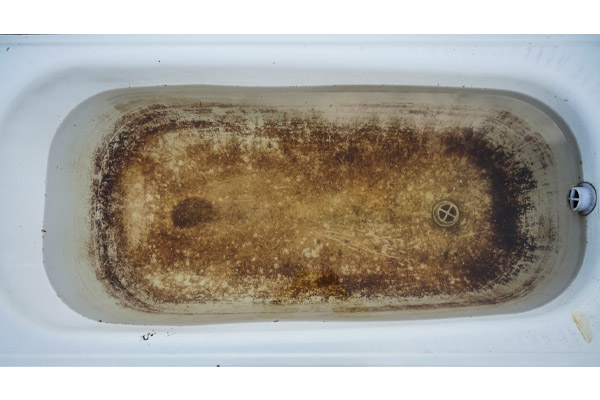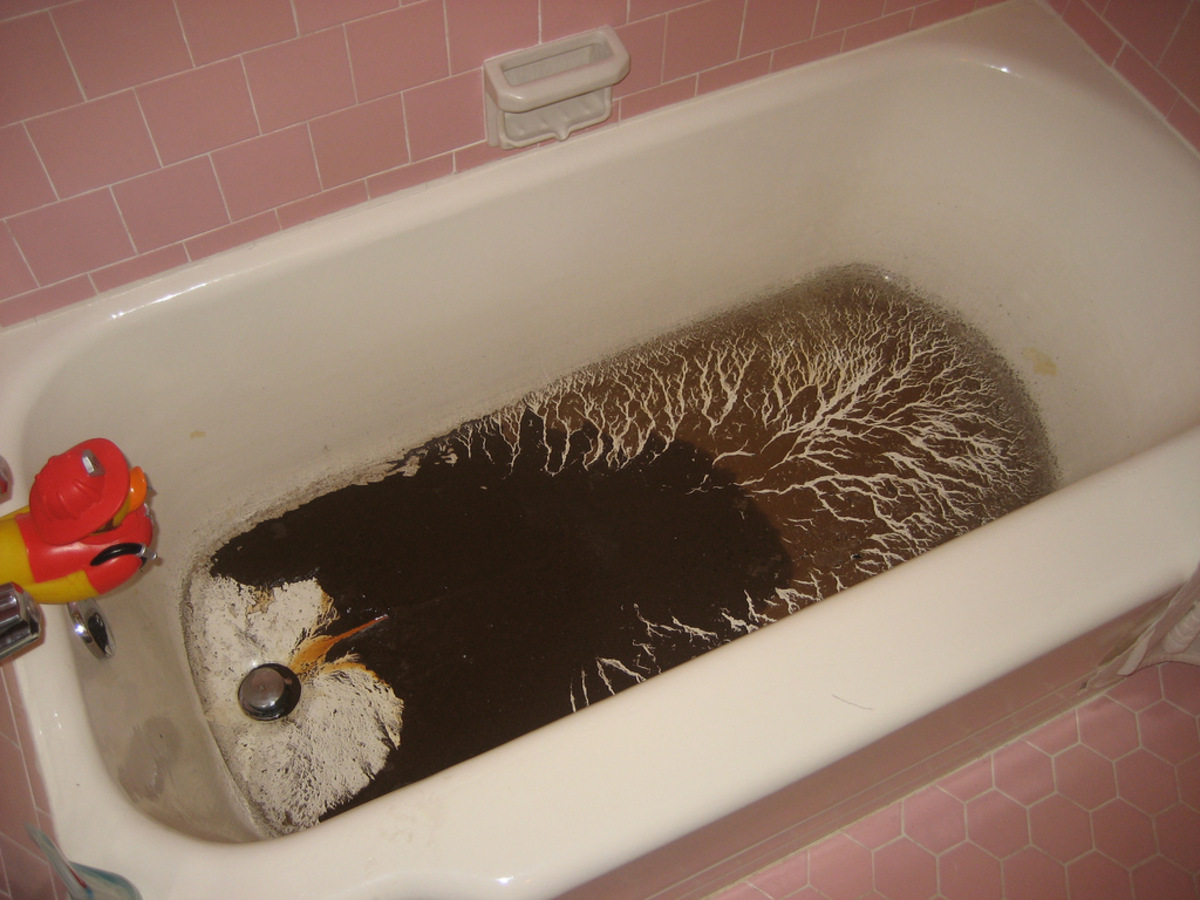Deciphering the Mystery of Discharge in the Bathtub
Deciphering the Mystery of Discharge in the Bathtub
Blog Article
Just how do you feel about Why sewage is coming up through your bathtub?

Sewer back-up in the bathtub can be a stressful and unhygienic problem for any house owner. Not just is it troublesome, however it also poses serious wellness dangers and shows underlying problems with the plumbing system. Recognizing why sewage is turning up via the tub is vital for taking suitable activity to attend to the issue effectively.
Introduction to the Concern
Understanding the Problem
When sewage draws back up into the tub, it's a clear sign of a problem with the drain system. The wastewater that ought to be moving away from your home is instead locating its way back into your living space, which can cause significant damages and health hazards.
Possible Causes
A number of aspects can contribute to sewage backup in the tub. From clogs in the drain line to problems with the plumbing facilities, recognizing the origin is important for discovering a remedy.
Usual Factors for Sewage Backup
Obstructions in the Sewage System Line
One of one of the most usual root causes of sewage back-up is a clog in the sewage system line. This can occur because of the buildup of particles, oil, or international items in the pipes, avoiding correct circulation and causing sewer to support right into your bathtub.
Tree Root Intrusion
Tree roots looking for wetness and nutrients can penetrate drain lines with small splits or joints. Gradually, these roots can expand and expand, causing substantial damages to the pipelines and leading to sewage back-up issues.
Aging Framework
Older homes may have outdated plumbing systems that are much more vulnerable to corrosion, fractures, and damage. As pipes age, they become much more prone to leaks and obstructions, raising the probability of sewage back-up events.
Heavy Rainfall or Flooding
Throughout periods of heavy rainfall or flooding, the drain system might become overwhelmed with excess water, causing backups and overflows. This can cause sewage backing up into tubs and other components inside the home.
Health And Wellness Dangers Connected With Sewage Backup
Contamination of Water
Sewer backup can contaminate the water system in your home, posturing a severe health and wellness danger to you and your family. Direct exposure to contaminated water can bring about gastrointestinal concerns, skin infections, and various other diseases.
Spread of Disease
Sewage has unsafe germs, viruses, and parasites that can cause a series of illness, including liver disease, cholera, and gastroenteritis. Coming into contact with sewer or contaminated surfaces places you at risk of infection.
Mold and mildew Development
Wetness from sewage backup can develop optimal problems for mold growth in your home. Mold spores can intensify respiratory troubles and create allergies in sensitive individuals, making prompt clean-up necessary.
Indicators of Sewer Back-up
Foul Odors
Unpleasant smells rising from drains pipes or components, especially in the shower room, may show sewer back-up problems. These smells are often strong and consistent, signaling a trouble that calls for instant attention.
Slow Draining Fixtures
Bathtubs, sinks, and toilets that drain slowly or otherwise at all could be experiencing sewage backup. If several components are affected concurrently, it's most likely that the concern stems from an usual point, such as the major sewage system line.
Gurgling Noises
Odd gurgling or bubbling sounds originating from drains when water is running somewhere else in your house are a measure of air trapped in the plumbing system. This air accumulation can arise from sewer back-up and must be checked out immediately.
Immediate Actions to Take
Turning Off Water Supply
In case of sewage back-up, it's necessary to switch off the supply of water to stop further contamination and damage. Find the major water shutoff valve in your house and closed it off up until the issue can be settled.
Calling a Specialist Plumber
Managing sewage back-up is not a DIY work. Get in touch with a certified plumber with experience in taking care of sewage-related issues to analyze the situation and do necessary repair services or cleanings.
Avoiding Contact with Polluted Water
Up until the sewer back-up is dealt with, prevent contact with infected water to stop the spread of microorganisms and pathogens. Wear protective gear if you should be in the afflicted area and wash your hands completely afterward.
Preventive Measures
Regular Maintenance of Sewer Lines
Schedule regular inspections and upkeep of your sewage system lines to determine and deal with potential issues prior to they intensify into significant troubles. This can include cleaning debris, examining for tree root invasion, and fixing any kind of broken pipelines.
Setting Up Bayou Shutoffs
Take into consideration setting up bayou shutoffs in your plumbing system to avoid sewer from receding into your home throughout durations of heavy rainfall or flooding. These valves automatically close when water starts backing up, shielding your property from contamination.
Appropriate Disposal of Home Waste
Stay clear of purging anything besides bathroom tissue and human waste down the toilet to stop clogs and blockages in the sewage system line. Dispose of grease, oil, and various other house chemicals effectively to decrease the threat of plumbing troubles.
Cleaning Up After Sewage Back-up
Sanitation Procedures
Extensively sanitize and sterilize influenced areas after sewage backup to get rid of dangerous microorganisms and protect against mold development. Use proper cleansing products and protective equipment to ensure risk-free and effective clean-up.
Remediation of Impacted Areas
Repair any type of damage to flooring, wall surfaces, or components triggered by sewage backup. Depending on the extent of the damage, you might require to change carpeting, drywall, or various other products to restore your home to its pre-loss condition.
Why is Sewage Coming Up Through Your Bathtub?
Reasons You May Have Sewage in Your Bathtub
All the drains in your home lead down different pipes to get to the main sewer line. If you’re seeing sewage in the bathtub, the problem is that the main sewer line is clogged up, which is causing the water running through other drains to be pushed back into other pipes. The problem isn’t the bathtub, but the main line. The sewer line can get backed up by anything that goes down the drain, from food waste, hair and soap particles to jewelry or children’s toys. Tree branches or dirt can also impact the sewer line. If you’re seeing sewage in the bathtub, you have a big problem that usually needs a professional plumber. Trying to fix this problem without the right tools or knowledge can lead to bigger plumbing problems.
Fixing a Clogged Sewage Line
Although you shouldn’t try to fix the clogged sewer line on your own, you may be able to mitigate the issue until you can get a plumber to your home. A plunger isn’t going to help, because it won’t be able to reach the sewage drain to unblock the problem.
Turn Off Water
Find the main shutoff valve to your home to turn off the water. This prevents more water from going down the drain which is only going to flow back into your bathtub.
Snake the Toilet and Drain
Start by using a drain pipe snake to clean out the toilet drain. Rotate the snake clockwise when you push the snake down. As you pull it out, the snake should spin counterclockwise. Follow up by snaking out the bathtub drain. If you are successful, both the toilet and shower will drain efficiently. If you’re not successful, you probably have a bigger problem than your tools and experience can manage.
Contact a Professional Plumber
Pros have the tools to find the source of the problem and the experience to manage big blockages without causing more damage to your pipes. It can save you a lot of stress by contacting the professionals sooner rather than later.
Identify the Early Signs of a Clogged Sewage Line
If you’re gearing up for a holiday family gathering or just want to avoid the hassle of a clogged sewage line in your home, make sure you recognize the signs of a clogged sewer line.
Slow drains are a sign of a sewer line problem. Gurgling drains from any drain in your home indicate that you may have an obstruction in the drains. If your toilet keeps getting clogged, it might be a problem with the sewer line. When you see laundry water or water from the dishwasher in different sinks in the home, it’s an indication that your sewer drain is beginning to get backed up. These symptoms can often be “fixed” temporarily to get through a day or week before you start seeing the same problem. When it comes to plumbing problems, you want to fix the root of the problem instead of muddling through. The clog will not go away on its own.
https://handymanconnection.com/mississauga/articles/why-is-sewage-coming-up-through-your-bathtub/

Do you really like reading up on ? Put a comment directly below. We'd be glad to find out your opinion about this page. Hoping that you visit us again soon. Sharing is caring. One never knows, you may just be doing someone a favor. Many thanks for your time. Come back soon.
Go Services
Report this page